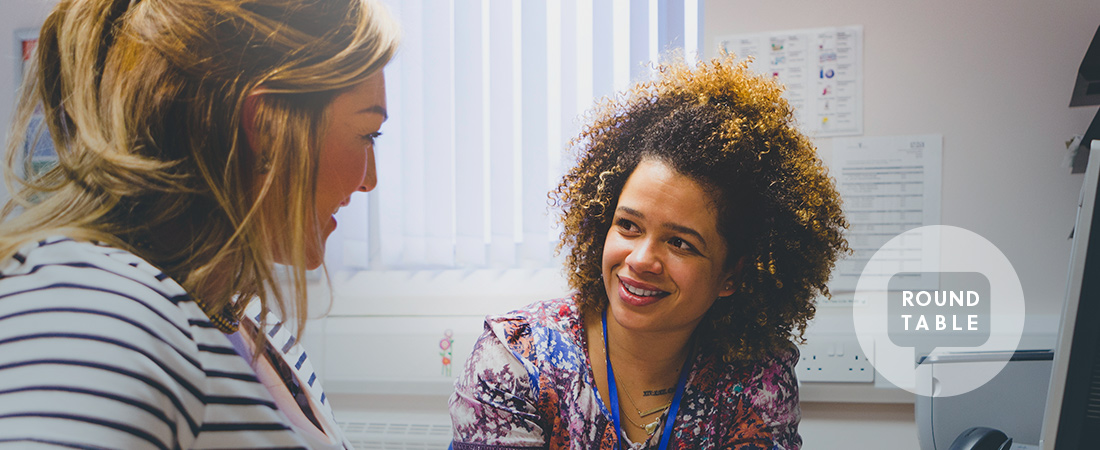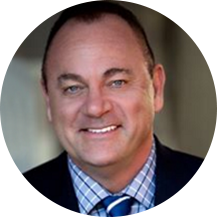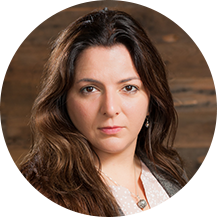How Can We Better Serve the Mental Health Needs of Women Veterans?

The United States has 2 million women veterans, women who are united by their service and often by the trauma they have experienced. According to the Veterans Administration, one in four women veterans experienced military sexual trauma while in the service. Back at home, female veterans are more likely to be homeless than male veterans, and they are six times more likely to die by suicide than women who did not serve.
EDC and U.S. VETS are partnering on a new effort to connect women veterans to relevant health services and resources. Here, four experts offer their ideas about how we can better serve the mental health needs of this population.
Create safe places to heal
Linda Miles, U.S. VETS
Women veterans need to know that they will be safe and that they will be heard when they seek mental health treatment. I’ve worked with young women who were the victims of sexual violence during the wars in Iraq and Afghanistan, and they are totally traumatized. They’ve been assaulted by their own comrades. And then, when they seek help, they have to use systems that traumatize them again.
I have walked in their shoes. I’m a Navy veteran, and I am survivor of rape. When I told my commanding officer about being attacked at gunpoint—I had two black eyes and a broken nose—he asked me what I was wearing and what I did to provoke it. That was in the 1970s. But not much has changed.
Military and veteran systems are not built for women. Awareness about sexual harassment is non-existent. When I sought treatment for my PTSD at health services, I felt men undressing me with their eyes. It was acceptable in military culture to do that; nobody said anything. I started wearing sunglasses inside so that men could not make eye contact with me. I didn’t want to start up any conversations.
“Women veterans have a lot of pride. In the service, they’ve had to work twice as hard to be equal to men. That strength is a great thing.”
–Linda Miles
The women that I see now are still suffering like I did. They need their own spaces to heal—places where they don’t feel judged but feel that they will be understood and made whole again. We also need mental health services that are under the direction of other professional women veterans, with therapists who are sensitive to the differences that are unique to the woman veteran’s psychodynamics.
Women veterans have a lot of pride. In the service, they’ve had to work twice as hard to be equal to men. That strength is a great thing. But it can make treating their mental health needs really difficult. They don’t want anyone to know that they are hurting. We need to build services where they feel safe and comfortable opening up about their mental health needs, where they can finally begin to heal.
Connect with community
Erin Smith, EDC
Many women veterans do not engage with mental health services because they don’t believe they need them or are deserving of care. Those that do, then, have already overcome a significant barrier to care. One way to reach deeper into the population is to work more closely with trusted community outreach organizations, faith-based groups, and businesses who are already serving women veterans.
To do this, we should empower people in veterans’ communities to act as in-roads to care. Imagine a hairdresser who has been taught to recognize the signs of depression, for example, and who can steer a client towards care. Or a pastor who can sense that a veteran’s home life isn’t stable and offers her information on social service resources. These individual actions have an impact. Collectively, they add up.
We also need to make sure that the outreach and services we are offering meet the needs of the women veterans we are trying to serve. In Los Angeles County, for instance, the majority of female veterans are women of color. Are outreach efforts reaching them? Do they have access to culturally competent mental health services? We know the answer is no in a lot of cases, particularly in under-resourced communities. Being intentionally inclusive and connecting with trusted members of the communities in which these women veterans operate are fundamentally important to improving the services available to all women veterans.
Build better systems of care
Robert Stohr, U.S. VETS
Many veterans’ health services were developed by men for men. In prioritizing the male military experience, these systems have inadvertently ignored many of the health concerns facing women veterans.
The military itself has struggled to welcome and accommodate women. Many women veterans have experienced harassment, unwelcome sexual advances, and military sexual trauma. It’s no wonder that women veterans are not reaching out for care. And when they do reach out, they often feel like they are entering a hostile environment.
Improving the health outcomes of women veterans has to start with building systems of care that engage and support women in seeking this care. So how do we do this? We ask and we listen. We need to better understand the concerns and mental health issues of women veterans from their perspectives. And then we need to train and employ doctors and therapists who not only understand these experiences but also know how to address them.
The suicide rate for women veterans is on the increase. Hopelessness and isolation are the two main drivers of suicide. By providing women veterans with a supportive community, we will increase hope, provide connection, and save lives. Three core messages have to come through loud and clear: you are welcome, you are safe, and most importantly, you belong.
Treat the whole person
Heidi Kar, EDC
The mental health care provided to women veterans too often focuses on what they may have encountered during their deployment. It is not integrated with the rest of their physical health, social history, and personal values, and it largely ignores other sources of pain—as well as sources of strength and resilience.
This narrow view of mental health represents a missed opportunity to provide effective health care for female veterans. Research has shown that many women veterans start their military career having already experienced significant life trauma. And when they return from deployment, traditional gender norms, employment-related concerns, and parenting role challenges can greatly complicate women veterans’ abilities to prioritize and access mental health care.
To improve care for women veterans, we need to train providers to take an integrated and holistic approach to care. This certainly means addressing trauma and other struggles that many veterans experience during their service. But it also means asking questions like, Are you currently in an abusive relationship? What support network do you have now? How does your military experience fit within your overall life experience and sense of self? How did you learn to cope with negative experiences or struggles in your life? And what barriers to care prevent you from seeking help when you are struggling?
If we do that—if we truly recognize that a woman’s status as a veteran is just one part of a complex life—then I believe we can build mental health treatments that are holistic and that overcome significant barriers to care.



